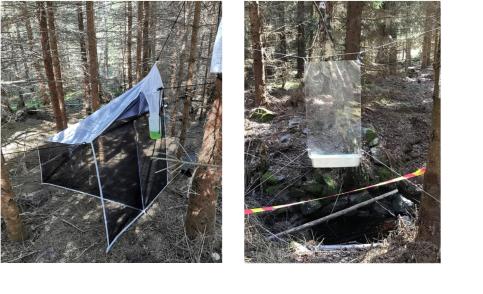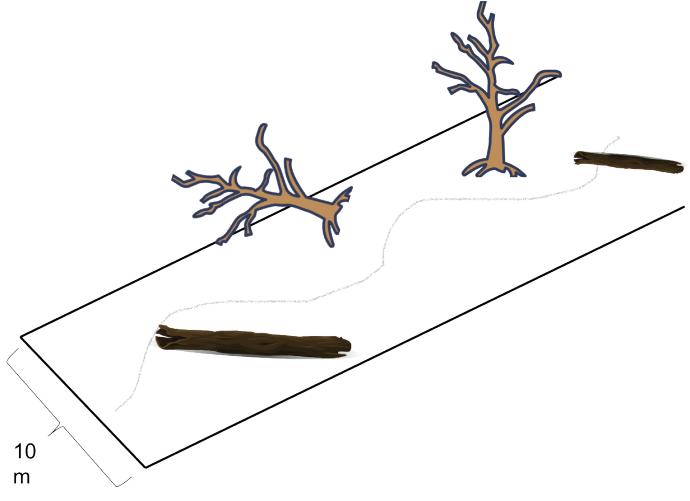Methods
Insect biomass, dead wood quantity and quality, and saproxylic mosses and fungi were studied at 35 sites in Östergötland county, in south-eastern Sweden. Of these 35 locations, 24 was located in conifer production forests (mainly Norwegian spruce (Picea abies)), divided into four age classes; spruce with an age of 1-6 years (i.e. clear-cuts), age 15-25, age 35-45, and age 65-85 (i.e. forest ready to be harvested). The remaining 11 locations were located in protected forests, whereof six with a shorter continuity and five with a long continuity.
Insect biomass
Insect biomass are divided in two parts that is A) Total biomass, and B) Biomass between five insect orders.

A) Total biomass
Insect biomass data were collected by using Malaise traps that were deployed in the beginning of May and taken down in early September. All traps were sited in the dominant environment with respect to sun exposure, dead wood, bottom layer coverage, and located at least 25 meters from the forest's edge to avoid trapping insects living in a nearby habitat. I had one trap per location (n=35). All samples were weighed in an alcohol wet state.
All insects were weighed in an alcohol wet state for comparison of biomass with samples collected from another study using 175 window traps distributed in the same forests as this study, weighed by the same method. Five window-traps was distributed in each forest. All window-traps were deployed with the start of the 1of May 2020 and dissembled in mid-July.
All samples from both traps were summed to get the total biomass for each forest type.
B) Biomass of five insect orders
All individuals from each sample, collected from the Malaise traps, were sorted into five insect orders; Diptera, Hemiptera, Hymenoptera, Lepidoptera, Coleoptera, and others. All groups were separately placed on glass dishes or in rhombic weighing boats, oven-dried at 60 degrees for 48 hours and then weighed as dry weight.
Dead wood quantity and quality
All 35 forest locations were also inventoried for dead wood and wood-inhabiting species of mosses and fungi. The malaise trap location worked as the starting point from where a randomly selected direction was chosen. After the selected direction, a ten-meter-wide transect was measured out, with the trap in the middle. Within this transect, all area was searched after dead wood (snags and logs) with a diameter larger than five cm at DBH, at least 1.3 m in length, and its root or basal diameter within the transect. The survey was finished when a total of 25 snags and/or logs was found, and then the length of the transect was measured.
Wood-inhabiting species
All logs and snags were inventoried for 22 species of wood-inhabiting mosses and fungi. The species ranged from common species to indicator species and rarer red-listed species. For each occurrence of any of the mosses species, abundance was documented (cm2), and for fungi species, presence was documented (0,1).

Responsible for this page:
Director of undergraduate studies Biology
Last updated:
05/28/21
